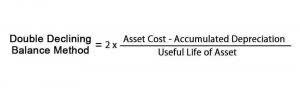Our comprehensive guide provides tips and strategies to help you stand out and land the internship of your dreams. Discover top strategies for answering the “Why Consulting” interview question.
Contents
Sales Commissions
To grasp the concept of variable costs fully, it’s essential to understand how they differ from fixed costs. Unlike variable costs, fixed costs remain constant regardless of production or sales volume. Common fixed costs include rent, employee salaries, insurance, and office supplies.
- The firm offers bookkeeping and accounting services for business and personal needs, as well as ERP consulting and audit assistance.
- Direct costs examples include direct materials (raw materials) and direct labor (wages of production workers).
- Note how the total variable cost rises with the number of chairs produced, while the fixed cost remains the same regardless of production output.
- Additionally, the concept of economies of scale comes into play, wherein higher production volumes often lead to lower per-unit variable costs.
- Whether you’re preparing for interviews or improving your skills, they can guide you every step of the way.
What is an example of a variable cost per unit?
For pricing, variable costs help ensure that product prices cover per-unit expenses, supporting profitability. In planning and budgeting, variable costs allow companies to forecast expenses accurately when adjusting production levels. They also play a critical role in break-even analysis, helping determine the minimum production needed to cover all costs. Additionally, variable costs influence calculations of gross margin, profit margin, and contribution margin net income, making them fundamental to profit assessments.
Formula and calculation of variable costs
- Sustainable variable cost management involves optimizing expenses while reducing environmental impact.
- To calculate variable costs, first, determine the total quantity of output (or sales) during the given period.
- As these costs directly rise with increased production, they significantly influence profit margins.
- Direct labor costs, sales commissions, and shipping fees are other instances of variable costs.
- By enhancing the capabilities of its workforce, the company ensures that consultants possess diverse skill sets, capable of handling various projects efficiently.
- Keep a close eye on fluctuations in production levels and sales volumes, as these directly impact variable costs.
However, some companies use machine hours as a basis for allocating overhead costs, making them indirect variable costs. Encourage a culture of continuous improvement and involve your employees in identifying cost-saving opportunities. Employees at all levels can provide valuable insights into improving processes, reducing waste, and optimizing resources.
Fixed costs, such as factory rent, remain constant regardless of output, unless directly connected to a specific product or department. The average variable cost formula is essential for tracking production expenses and maximizing profitability. This guide breaks down the concept of average variable cost (AVC), explains why it https://www.bookstime.com/articles/what-is-a-transposition-error matters, and provides a clear formula with examples to help you calculate it accurately. Variable cost per unit refers to the total cost of producing a single unit of your business’ product.
- Use data analytics tools to identify patterns and trends, enabling you to make informed decisions on cost optimization.
- Fixed costs refer to expenses that do not change with production output, such as rent for your offices or salaries for permanent employees.
- In her spare time, Kristen enjoys camping, hiking, and road tripping with her husband and two children.
- Further, it equips businesses with valuable insights to identify profitable ventures and streamline operations.
- Kristen Slavin is a CPA with 16 years of experience, specializing in accounting, bookkeeping, and tax services for small businesses.
Regular monitoring and analysis
Variable costs examples include direct materials (as their quantity changes with output), packaging, and sales commissions. In summary, knowing the difference between direct costs and variable costs equips you for exam success, informed business decisions, and a deeper understanding of accounting. Use this distinction to improve your budgeting, pricing, and which group of costs is the most accurate example of variable cost? cost analysis, with confidence in all your Commerce studies at Vedantu. Understanding the difference between direct and variable costs helps students answer exam questions and assists businesses in accurate cost calculations. This distinction impacts pricing, budgeting, profit analysis, and break-even calculations.





